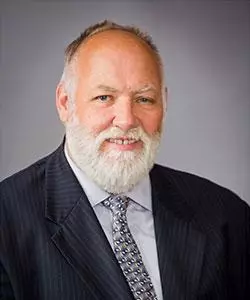Living paycheck to paycheck may create several financial issues for you. You might be experiencing financial stress due to unexpected expenses. Trust me, there are many others also who are facing this problem. Over 70% of Americans live paycheck to paycheck, and most of them have only emergency funds as savings, nothing more!
Living paycheck to paycheck only uses all your monthly paycheck to pay off your essential living expenses. You’ll have little or zero savings in a month following this strategy. You can’t even save for investments or emergencies. Practically, if you face any unexpected expense or financial hardship, it might become an immediate financial disaster.
People of any age group, income level, and location may face financial issues with this strategy. Both your daily life and future life goals can be affected by living paycheck to paycheck. It hampers financial stability and makes it difficult for you to secure a financial future.
The one effective way out of this problem is following the “Pay Yourself First' or PYF strategy. You just need to pay yourself first, to save money via automatic transfers, and saving for your emergency fund or investments. You give priority to savings and long-term financial goals before anything.
The benefits of paying yourself first may take time to be reflected. However, you’ll notice that whenever a financial emergency kicks in, you have enough funds to wipe it off. Ultimately, paying yourself first is all about preparing yourself for the upcoming storm. This strategy makes you ready for any crisis and builds wealth.
Understanding the 'Paying Yourself First' Principle
It is important for you to know the concept of ‘Pay Yourself First.’ This savings vehicle is helpful for people seeking financial stability. Pay Yourself First” saving money for yourself. The money you may use for retirement savings, emergency funds, or investments. You have to pay yourself before paying your bills or other everyday expenses. This way, you may push yourself up for long-term financial freedom.
Erika Kullberg, Founder of Erika.com, an attorney and personal finance expert, also described - “if your paycheck brings in $3000 per month, practicing Pay Yourself First would look like setting up an automatic deposit to your savings account. How much you deposit to your savings is completely personal and depends on your lifestyle, but let’s say, for the purpose of our example, you sent $250 to your savings account and another $100 into a retirement or investment account. The value isn’t important, but rather the perspective that your agency is key when it comes to protecting yourself financially and building for the future as a principle.”
Many experts may suggest the opposite. They will teach you to pay your outstanding bills first. They will suggest you think about savings if you have any surplus left after that. However, by paying yourself first, you’ll be securing your financial future.
So basically, Paying yourself first allows you to:
- Breaks the cycle of paycheck to paycheck.
- Set up for financial freedom and independence.
- Establish an emergency fund for unexpected events.
- Enable investment in personal growth and development.
The benefits of PYF for breaking the paycheck-to-paycheck cycle
1. You can break the cycle of living paycheck to paycheck
- You become less dependent on a paycheck.
- You have full control over any of the financial situations.
- You may consistently save for investments or emergencies.
- You can easily shift from a paycheck-to-paycheck lifestyle.
2. You can achieve financial security
- You may easily prioritize savings and investments.
- You can save enough to build a safety net for unexpected expenses.
- You may avoid debts and become less dependent on credit cards.
- You can maintain peace of mind during tough financial times.
3. You’ll become ace at future planning
- You can contribute from your checking account towards investment and future income.
- You can save for retirement, put capital into business start-ups, or pay for education.
- You can allocate funds for a secure, fulfilling future.
4. You can get the advantages of compound interest
- You may boost your money growth in a savings account.
- You may accumulate funds faster with compound interest over time.
- You can make significant savings through small savings.
- You can speed up fulfilling future financial goals by breaking the paycheck-to-paycheck cycle.
5. You can Improve your financial well-being
- You can reduce financial stress.
- Your overall confidence in money management will increase.
- You have control over your financial goals.
- You have a positive impact on your overall well-being.
How To Implement PYF on a Limited Income
You can build your pay yourself first budget strategy by focusing on long-term savings goals. You can definitely skip your short-term expenses. Ethan Keller, the President of Dominion, which operates as a global network of legal and financial consultants, added - “With a low income, every bit counts, so be consistent with small contributions and explore ways to boost income. Separate savings accounts can also help achieve different goals. One can plan to save 30% of their income and divide it into sections. So, they can consider investing 15% in a retirement account, 10% in emergency savings, and 5% in travel savings. Track progress and adjust the plan as needed. Never forget that achieving financial freedom takes time and effort.”
You can start with the following:
Calculate how much you earn
Determine how much you earn each month. Add all income, including paycheck, side hustle, and income from investments. Check your recent pay stubs and bank statements to know the exact amount.
Fix your saving goals
Determine your long-term goals and how much you can save monthly towards them. Once you’ve fixed your goals and the amount, you can use the leftover from your paycheck to pay for your day-to-day expenses.
Aim to save 20% initially. If you can't manage it, try finding areas from your household expenses that you can cut back. You may also try to increase your overall income.
Start small and increase gradually
You should start paying yourself a small amount. You can later increase the amount when you are comfortable to do so. Even saving a small amount consistently may give you significant savings in the long run. Michael Ashley, the founder of Richiest.com, suggested that starting with a small percentage, like 5%, would be good. He also suggests using automatic transfers to make the process easier.
Choose a savings vehicle
You need to set up a separate account from your existing savings and checking accounts. The type of account is important as it can speed up the growth so you can reach your savings goals. You should choose a high-yield savings account and grow your funds over time.
These are some different types of savings accounts:
- 401(k) or IRA
- Traditional savings account
- High-yield savings account
- Money market account
- Education savings account
- Health savings account
- Flexible spending account
Ask your employer to split your direct deposit
This way, you may cut a slice of your paycheck and send it directly into your savings account. This way, you can save before you spend. You can start managing your living expenses from the remaining paycheck, which is a fantastic method of building up your own savings.
Review your PYF budget plan regularly and adjust
One important budgeting principle is to review your PYF savings or investment strategy periodically. Your income and expenses may change over time. So, you should also review your savings rate and adjust it accordingly. If you are saving for investment, explore different investment options. Based on that, determine how much of your income you will allocate for savings or investments.
Consult a professional if needed
If you’re not certain what to do and how to do it, seek advice from an expert, such as a certified financial planner. An expert in the financial industry may guide you on the right path. It will be easier for you to build an emergency fund or invest for the future.
How to Build an Emergency Fund or Investment Fund with PYF
There are a few steps involved:
- Create your pay yourself first budget and determine how much you are going to save for financial emergencies and investments.
- Open two separate savings or money market accounts at your bank or credit union. One for emergency savings and one for investment funds.
- From each paycheck, ask your employer to cut off a portion and send it directly to your emergency savings account via automatic transfer.
- If you earn from side hustles, deposit that extra money into your investment funds.
- Once you have built an emergency fund with three to six months’ worth of cost-of-living expenses, you can focus on other financial goals.
- Discuss with an investment professional and diversify your portfolio using your investment fund.
- Do not spend money from the emergency fund.
- Once your investments start yielding returns, deposit the money into your investment fund account. You may then use that money to build wealth.
- You may create multiple bank accounts for multiple savings funds to meet other long-term and short-term financial goals such as buying a car, buying a home, vacation, home renovation or repairs, marriage, medical expenses, etc.
Some low-risk investment options suitable for different risk tolerances and financial goals for 2024:
- High-yield savings accounts
- Money market funds
- Short-term certificates of deposit
- Series I savings bonds
- Treasury bills, notes, bonds and TIPS
- Corporate bonds
- Dividend-paying stocks
- Preferred stocks
- Money market accounts
- Fixed annuities
DATA COURTESY - bankrate.com
How To Overcome Obstacles and Stay Motivated While Implementing PYF
First of all, you need to know what are the obstacles to developing pay yourself first habit. Practically, these are some of them:
- Not having enough money after paying expenses
- Not having enough income
- This concept is unreal and meaningless
- Having high-interest debts
- Having high household expenses
- It is too late to start following this concept
When Paying Yourself First Will Be Harmful?
If you have a lot of high-interest debts such as credit card bills or payday loans, you must pay those off completely or lower the outstanding balances. You should do it before you follow the pay-yourself-first strategy. If you don’t, you might end up paying more in interest on your outstanding debts than you save towards your savings account. This way you will be drowning in debt severely.
Motivate yourself with the “pay yourself first” concept:
If saving money is your prime goal, then the “pay yourself first” method is best for you. Some aspects of this method are quite motivating:
- Easy to understand and implement.
- Requires minimal time and effort.
- Automated savings contributions remove deposit hassles.
- Savings occur automatically.
- Prioritize saving as the primary goal of your budget plan.
- Expenses are managed from the remaining paycheck amount.
- Quickly build an emergency fund for job loss, car repair, and other crises.
- Creates a financial cushion for sudden costs, thus providing mental peace.
- Facilitates steady progress toward savings goals.
- Automating savings helps achieve financial goals faster.
- Helps manage short- or long-term savings goals simultaneously.
- Encourages investments and helps build wealth.
Conclusion
“Pay yourself first” does not depend on your age. You can start following this personal finance strategy at any time and create a regular savings plan. Through this strategy, you can start building an emergency fund and investing in your future like any other individual. However, you need to be responsible for your finances and stick to the budgeting strategy.
If you stick to the pay-yourself-first budgeting principle, you'll gain both money and psychological rewards. It will help you live within your means, pay bills, debt payments, household expenses, and save for retirement contributions. The habit of saving and the positive mindset will help you go one step further towards financial freedom.









